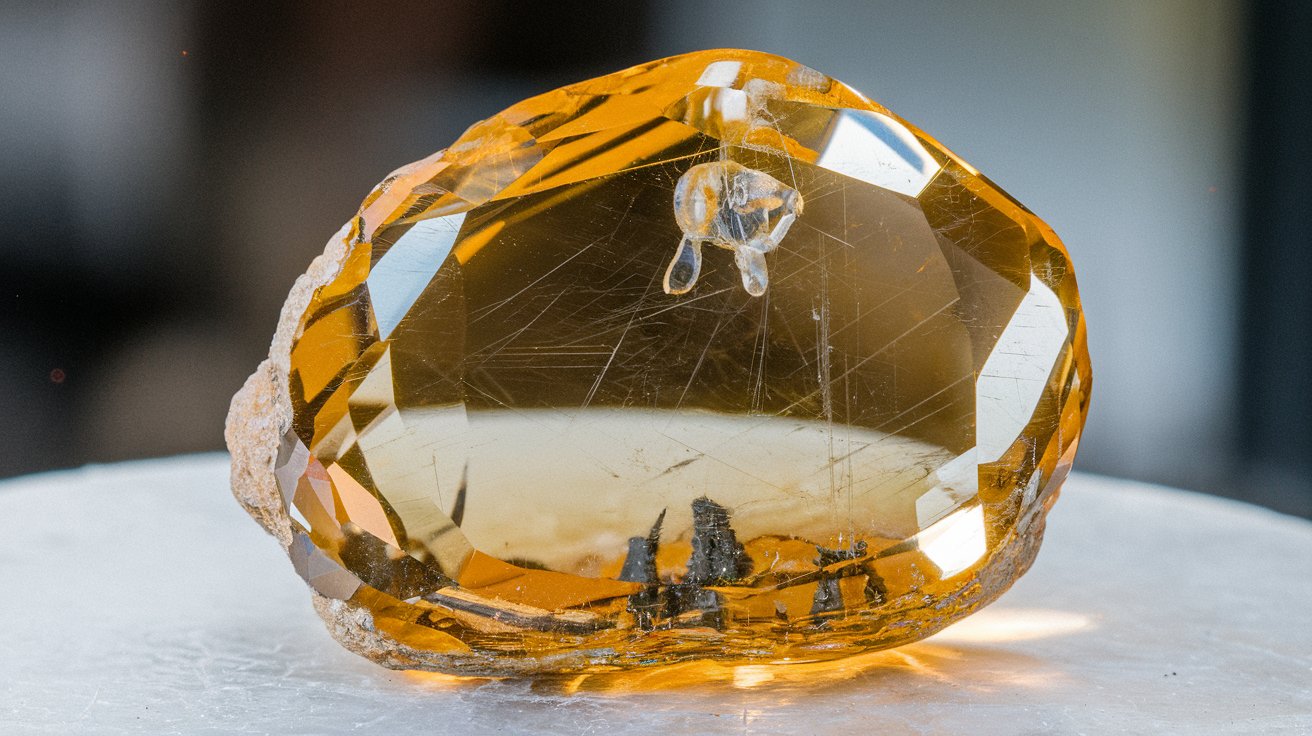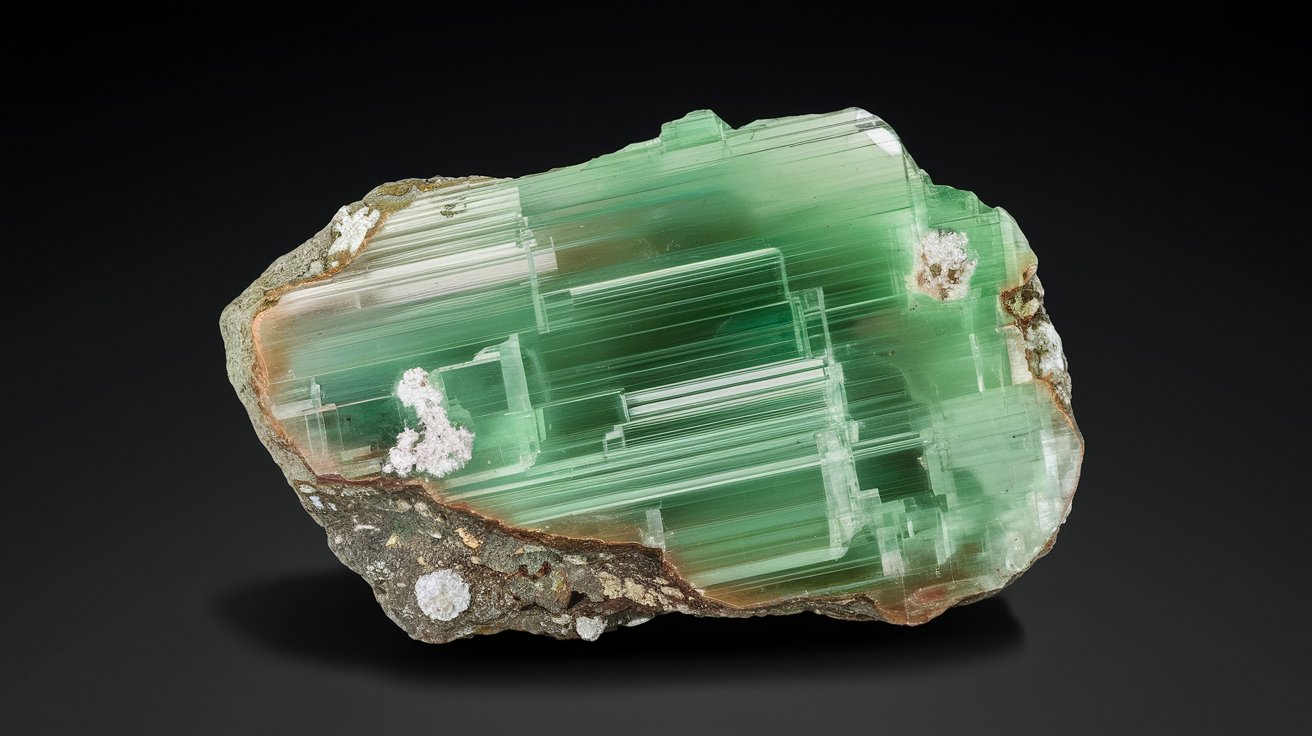
What makes Almarudite so special? Almarudite is a rare and captivating mineral with a unique blend of elements like potassium, manganese, beryllium, aluminum, and silicon. First discovered in Germany's Caspar quarry, this mineral stands out due to its hexagonal crystal structure and vibrant yellow to orange color. Its hardness of 6 on the Mohs scale and specific gravity of 2.714 make it both durable and dense. Found primarily in metamorphic rocks, almarudite forms under high pressure and temperature conditions. Its rarity and distinct properties make it a prized specimen for collectors and a subject of scientific interest.
Key Takeaways:
- Almarudite, a rare and fascinating mineral, was named after the Almarud family and is primarily found in Germany. Its unique structure and properties make it a prized find for collectors and a valuable subject for scientific study.
- Almarudite's yellow to orange color, vitreous lustre, and hardness of 6 on the Mohs scale make it stand out among minerals. Its rarity and distinctive appearance make it highly prized among collectors and valuable for scientific research and education.
Discovery and Naming
Almarudite is a rare mineral that has fascinated scientists and collectors alike. Let's dive into some interesting facts about this unique mineral.
- Almarudite was first discovered in the Caspar quarry, Ettringen, Vordereifel, Mayen, Germany.
- The mineral was named after the Almarud family, who were prominent figures in the region where it was found.
Chemical Composition and Structure
Understanding the chemical makeup and structure of almarudite helps explain its unique properties.
- The chemical formula for almarudite is K◻2Mn2+2(Be2Al)[Si12O30].
- Almarudite crystallizes in the hexagonal system, forming six-sided tabular crystals.
- These crystals can reach up to 1.5 mm in size.
- The crystal structure features a layered arrangement of silicon and oxygen atoms, with beryllium and aluminum ions in between.
Physical Properties
The physical characteristics of almarudite make it stand out among other minerals.
- Almarudite typically exhibits a yellow to orange color.
- It has a vitreous (glassy) lustre.
- The mineral has a hardness of 6 on the Mohs scale, making it relatively hard and resistant to scratching.
- Its specific gravity is approximately 2.714, indicating it is denser than water.
Geological Occurrences
Almarudite's geological settings provide clues about its formation and rarity.
- Almarudite is primarily found in the Caspar quarry, Ettringen, Vordereifel, Mayen, Germany.
- It also occurs in other localities, although these are less well-documented.
- The mineral is typically associated with other manganese-bearing minerals.
- It is often found in metamorphic rocks.
Formation Process
The formation of almarudite involves specific geological conditions.
- Almarudite forms through the metamorphism of manganese-rich rocks.
- High pressure and temperature conditions cause the minerals to recrystallize into more complex structures like almarudite.
- The presence of potassium and beryllium ions is crucial for its formation.
Mineral Group and Molecular Weight
Almarudite belongs to a specific group of minerals and has a notable molecular weight.
- Almarudite belongs to the silicate mineral group, specifically within the group of complex silicates.
- The molecular weight of almarudite is approximately 1,000.32 grams per mole.
Elemental Composition
The elements within almarudite contribute to its unique properties.
- Almarudite contains about 3.36% potassium by weight.
- Manganese makes up about 4.05% of the mineral's weight.
- Beryllium and aluminum ions occupy interstitial positions within the silicate framework.
- The silicon and oxygen atoms form a three-dimensional framework, providing rigidity and strength.
Crystal Habit and Optical Properties
The appearance and optical characteristics of almarudite add to its allure.
- Almarudite typically forms six-sided tabular crystals.
- Its vitreous lustre suggests it may exhibit some degree of transparency or translucency.
Rarity and Collectibility
Almarudite's rarity makes it a prized find for collectors.
- Almarudite is considered a rare mineral due to its limited occurrence in specific geological settings.
- Its rarity and distinctive appearance make it highly prized among mineral collectors.
Scientific and Educational Value
Almarudite holds significant value for scientific research and education.
- Almarudite's complex composition and crystal structure make it an interesting subject for scientific study.
- It serves as an excellent teaching tool in mineralogy and geology classes.
Potential Applications and Environmental Significance
While not widely used industrially, almarudite's properties can inspire new materials.
- Understanding almarudite's properties can contribute to the development of new materials with similar structures.
The Fascinating World of Almarudite
Almarudite stands out as a rare and intriguing mineral. Its unique chemical composition of potassium, manganese, beryllium, aluminum, and silicon, along with its hexagonal crystal structure, makes it a subject of great interest. Found primarily in the Caspar quarry in Germany, this mineral's yellow to orange color and vitreous lustre add to its appeal. With a hardness of 6 on the Mohs scale and a specific gravity of 2.714, almarudite is both durable and dense. Its formation through the metamorphism of manganese-rich rocks and its association with other manganese-bearing minerals highlight its geological significance. Though rare, almarudite is highly prized by collectors and researchers alike. Its study not only enhances our understanding of mineralogy but also provides insights into Earth's geological history. Almarudite truly is a gem in the world of minerals.
Frequently Asked Questions
Was this page helpful?
Our commitment to delivering trustworthy and engaging content is at the heart of what we do. Each fact on our site is contributed by real users like you, bringing a wealth of diverse insights and information. To ensure the highest standards of accuracy and reliability, our dedicated editors meticulously review each submission. This process guarantees that the facts we share are not only fascinating but also credible. Trust in our commitment to quality and authenticity as you explore and learn with us.


